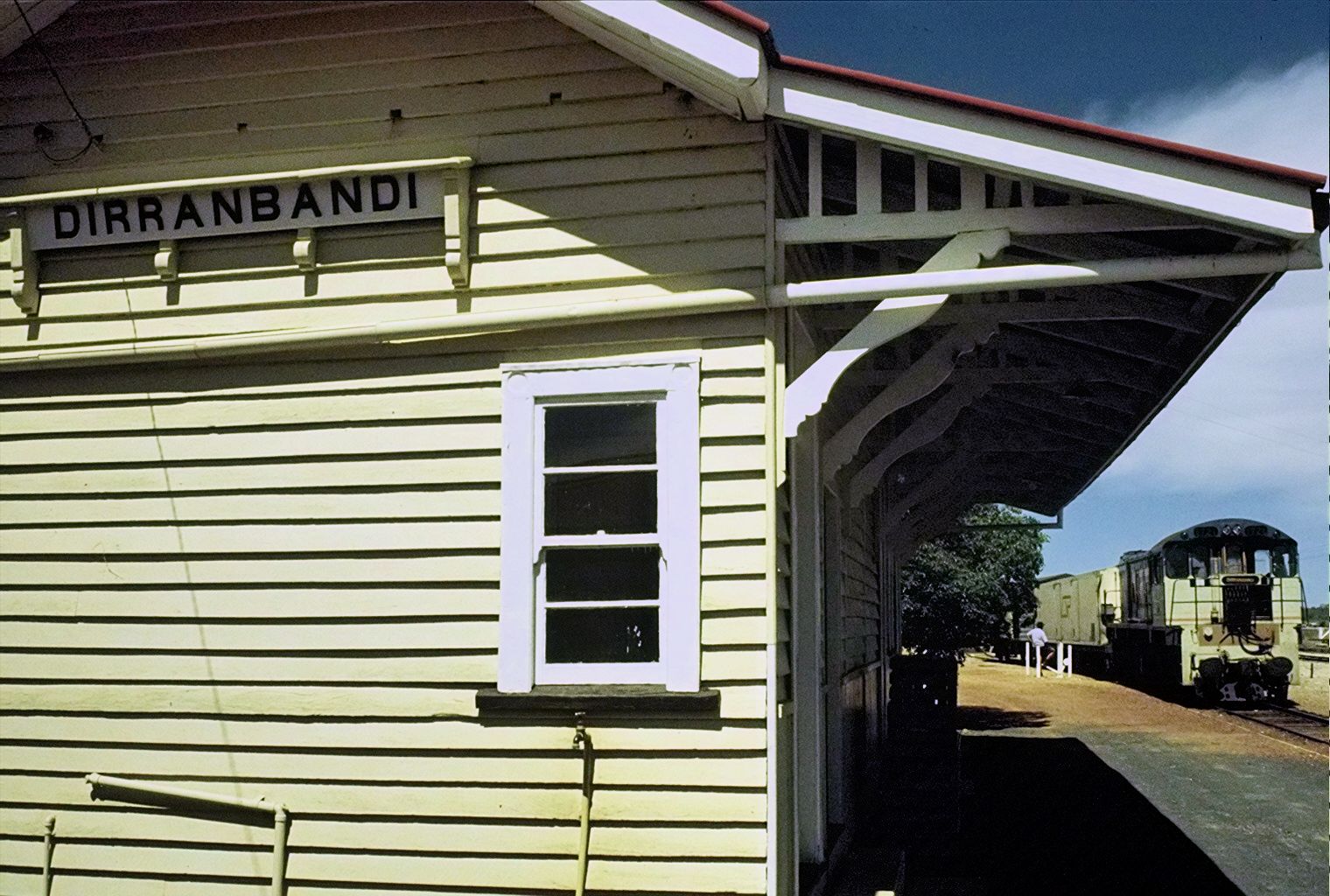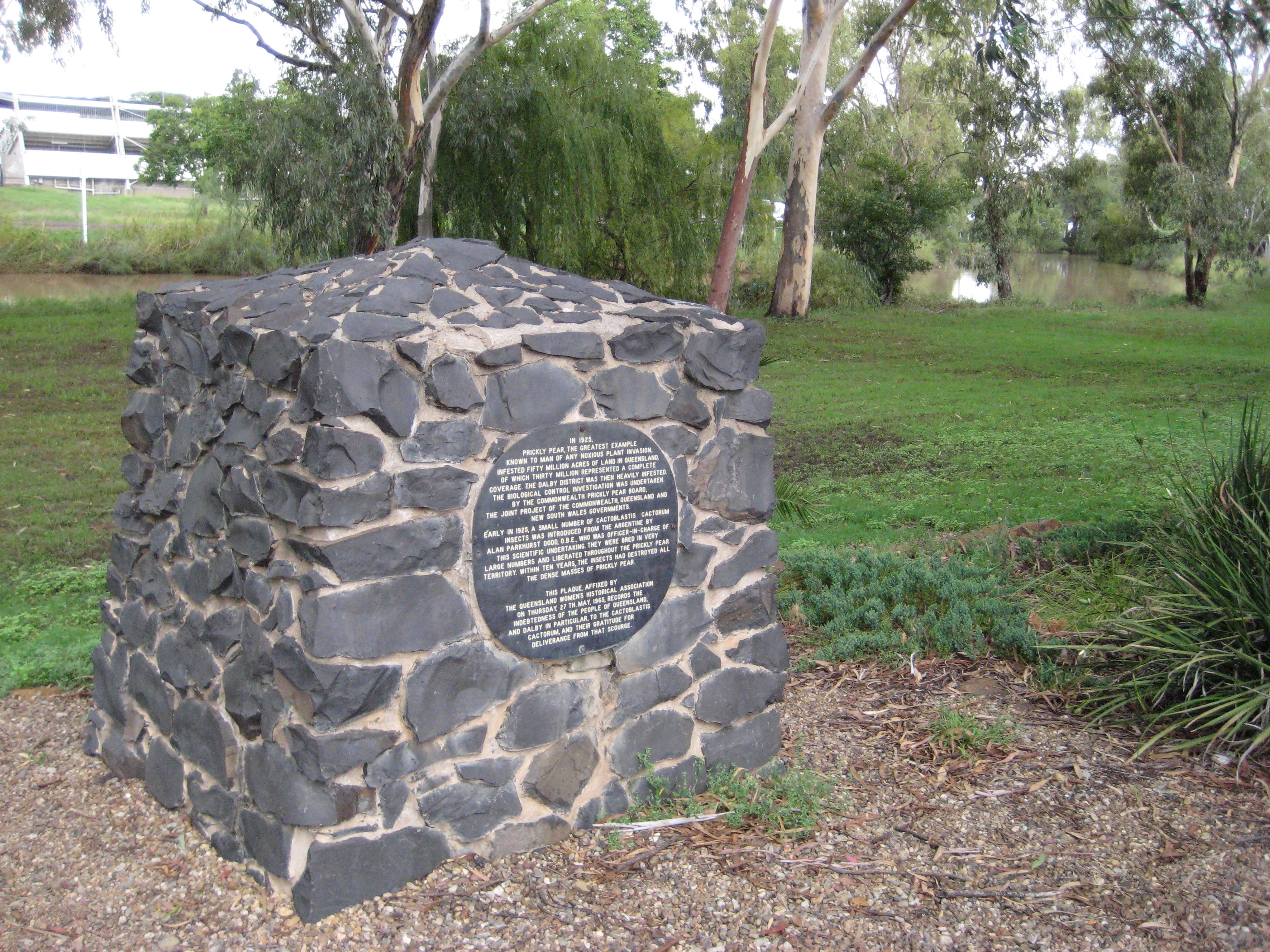|
Bullamon Homestead
Bullamon Homestead is a heritage-listed homestead at Moonie River, Thallon, Shire of Balonne, Queensland, Australia. It was built from 1860s circa to 1880s circa. It is also known as Gerar. It was added to the Queensland Heritage Register on 2 June 1996. History Bullamon Homestead, on the Moonie River southwest of Thallon, was established by the early 1860s, being marked on Surveyor Francis Thomas Gregory's map of the district drawn in April 1864. In the 1880s Bullamon was head station for the largest aggregation of leases ever recorded in Balonne Shire. The name is understood to mean "biggest waterhole", and the homestead is located on a large sandy ridge above the Moonie River. Scattered settlement had spread north from the Liverpool Plains to the Moonie River area as early as the mid-1840s. The Maranoa, a vast area of first-class grazing land watered by the Moonie, Balonne, Narran and Culgoa rivers, was gazetted a pastoral district in 1848, following Sir Thoma ... [...More Info...] [...Related Items...] OR: [Wikipedia] [Google] [Baidu] |
Thallon, Queensland
Thallon is a town and a locality in the Shire of Balonne, Queensland, Australia. In the , Thallon had a population of 257 people. There is a second town within the locality, Nindigully. Geography Thallon is in South West Queensland, west of the state capital, Brisbane. The town is situated in roughly towards the east of the locality. The Moonie River flows from south to north through the locality and just to the west of the town. The Carnarvon Highway passes from north to south through the locality and through the town (as Hill Street) connecting the town to St George to the north and Mungindi on the border with New South Wales. The South-Western railway line passes through the locality from east to west and the town is served for freight rail by the Thallon railway station. Thallon is a major wheat and woolgrowing area. History Gamilaraay (Gamilaroi, Kamilaroi, Comilroy) is a language from South-West Queensland and North-West New South Wales. The Gamilaraay langu ... [...More Info...] [...Related Items...] OR: [Wikipedia] [Google] [Baidu] |
Darling Downs
The Darling Downs is a farming region on the western slopes of the Great Dividing Range in southern Queensland, Australia. The Downs are to the west of South East Queensland and are one of the major regions of Queensland. The name was generally applied to an area approximating to that of the Condamine River catchment upstream of Condamine township but is now applied to a wider region comprising the Southern Downs, Western Downs, Toowoomba and Goondiwindi local authority areas. The name Darling Downs was given in 1827 by Allan Cunningham, the first European explorer to reach the area and recognises the then Governor of New South Wales, Ralph Darling. The region has developed a strong and diverse agricultural industry largely due to the extensive areas of vertosols (cracking clay soils), particularly black vertosols, of moderate to high fertility and available water capacity. Manufacturing and mining, particularly coal mining are also important, and coal seam gas extraction ex ... [...More Info...] [...Related Items...] OR: [Wikipedia] [Google] [Baidu] |
Veranda
A veranda or verandah is a roofed, open-air gallery or porch, attached to the outside of a building. A veranda is often partly enclosed by a railing and frequently extends across the front and sides of the structure. Although the form ''verandah'' is correct and very common, some authorities prefer the version without an "h" (the ''Concise Oxford English Dictionary'' gives the "h" version as a variant and '' The Guardian Style Guide'' says "veranda not verandah"). Australia's ''Macquarie Dictionary'' prefers ''verandah''. Architecture styles notable for verandas Australia The veranda has featured quite prominently in Australian vernacular architecture and first became widespread in colonial buildings during the 1850s. The Victorian Filigree architecture style is used by residential (particularly terraced houses in Australia and New Zealand) and commercial buildings (particularly hotels) across Australia and features decorative screens of wrought iron, cast iron "lace" ... [...More Info...] [...Related Items...] OR: [Wikipedia] [Google] [Baidu] |
Roof Shingle
Roof shingles are a roof covering consisting of individual overlapping elements. These elements are typically flat, rectangular shapes laid in courses from the bottom edge of the roof up, with each successive course overlapping the joints below. Shingles are held by the roof rafters and are made of various materials such as wood, slate, flagstone, metal, plastic, and composite materials such as fibre cement and asphalt shingles. Ceramic roof tiles, which still dominate in Europe and some parts of Asia, are still usually called tiles. Roof shingles may deteriorate faster and need to repel more water than wall shingles. They are a very common roofing material in the United States. Etymology and nomenclature Shingle is a corruption of German meaning a roofing slate."Shingle" def. 1. Whitney, Wi ... [...More Info...] [...Related Items...] OR: [Wikipedia] [Google] [Baidu] |
Hip Roof
A hip roof, hip-roof or hipped roof, is a type of roof where all sides slope downwards to the walls, usually with a fairly gentle slope (although a tented roof by definition is a hipped roof with steeply pitched slopes rising to a peak). Thus, a hipped roof has no gables or other vertical sides to the roof. A square hip roof is shaped like a pyramid. Hip roofs on houses may have two triangular sides and two trapezoidal ones. A hip roof on a rectangular plan has four faces. They are almost always at the same pitch or slope, which makes them symmetrical about the centerlines. Hip roofs often have a consistent level fascia, meaning that a gutter can be fitted all around. Hip roofs often have dormer slanted sides. Construction Hip roofs are more difficult to construct than a gabled roof, requiring more complex systems of rafters or trusses. Hip roofs can be constructed on a wide variety of plan shapes. Each ridge is central over the rectangle of the building below it. Th ... [...More Info...] [...Related Items...] OR: [Wikipedia] [Google] [Baidu] |
Foundation (engineering)
In engineering, a foundation is the element of a structure which connects it to the ground, transferring loads from the structure to the ground. Foundations are generally considered either shallow or deep. Foundation engineering is the application of soil mechanics and rock mechanics (geotechnical engineering Geotechnical engineering is the branch of civil engineering concerned with the engineering behavior of earth materials. It uses the principles of soil mechanics and rock mechanics for the solution of its respective engineering problems. It a ...) in the design of foundation elements of structures. Purpose Foundations provide the structure's stability from the ground: * To distribute the weight of the structure over a large area in order to avoid overloading the underlying soil (possibly causing unequal settlement). * To anchor the structure against natural forces including earthquakes, floods, droughts, frost heaves, tornadoes and wind. * To provide a level su ... [...More Info...] [...Related Items...] OR: [Wikipedia] [Google] [Baidu] |
Carnarvon Highway
Carnarvon Highway is a state highway in Queensland and New South Wales, Australia, linking the township of Rolleston in Queensland's Central Highlands Region, via the town of St George, eventually to Moree in northern New South Wales. It is the main access road to the Carnarvon National Park, and serves as a strategic route to take B-doubles and other large vehicles (which cannot use the Bruce Highway) to the Queensland ports north of Rockhampton. Route Carnarvon Highway starts at the intersection with Dawson Highway just west of Rolleston in Queensland, and heads in southerly direction until it reaches Roma, where it shares a short concurrency with Warrego Highway, and continues south to St George, where it meets Moonie, Balonne, and Castlereagh Highways. It crosses the state border at Mungindi to eventually terminate at the town of Moree, in New South Wales. History The passing of the ''Main Roads (Amendment) Act of 1929'' (which amended the original ''Main Roads Act of 192 ... [...More Info...] [...Related Items...] OR: [Wikipedia] [Google] [Baidu] |
Mungindi
Mungindi is a town and locality on the border of New South Wales (NSW) and Queensland, Australia. The town is within Moree Plains Shire in New South Wales. Within Queensland, the locality is split between the Shire of Balonne (the western part) and the Goondiwindi Region (eastern part) with the town in the Shire of Balonne. It possesses a New South Wales postcode. Mungindi sits on the Carnarvon Highway and straddles the Barwon River which is the border between New South Wales and Queensland. At the , Mungindi had a population of 601 on the New South Wales side, while the population on the Queensland side was 146. Geography ''Mungindi'' means ''water hole in the river'' in Kamilaroi. Located uniquely on both sides of the New South Wales and Queensland border, Mungindi is the only border town in the Southern Hemisphere with the same name on both sides of the border. The state border runs down the centre of the Barwon River and under the centre of the Mungindi Bridge, but ... [...More Info...] [...Related Items...] OR: [Wikipedia] [Google] [Baidu] |
Cobb And Co
Cobb & Co was the name used by many successful sometimes quite independent Australian coaching businesses. The first was established in 1853 by American Freeman Cobb and his partners. The name Cobb & Co grew to great prominence in the late 19th century, when it was carried by many stagecoaches carrying passengers and mail to various Australian goldfields, and later to many regional and remote areas of the Australian outback. The same name was used in New Zealand and Freeman Cobb used it in South Africa. Although the Queensland branch of the company made an effort to transition to automobiles in the early 20th century, high overhead costs and the growth of alternative transport options for mail, including rail and air, saw the final demise of Cobb & Co. The last Australian Cobb & Co stagecoach ran in Queensland in August 1924. Cobb & Co has become an established part of Australian folklore commemorated in art, literature and on screen. Today the name is used by a number of Aust ... [...More Info...] [...Related Items...] OR: [Wikipedia] [Google] [Baidu] |
South Western Railway Line, Queensland
The South Western line is a narrow gauge railway line in the southern part of the state of Queensland, Australia. It junctions from the Southern line immediately south of Warwick station and proceeded westwards for a distance of 413 km to the town of Dirranbandi. A western extension to Boomie in New South Wales, approved by the Queensland Parliament in 1914, was never constructed. The Thallon-to-Dirranbandi section was closed on 2 September 2010. It services the small towns of Inglewood (junction of the now closed Texas branch) and Goondiwindi as well as the villages of Yelarbon and Thallon among others. History The South Western line opened as far as Thane on 1 July 1904 and was completed to Dirranbandi on 21 May 1913. A further extension of the line west of Dirranbandi was approved by Parliament in 1914 but never constructed. Services The South Western Mail was introduced as a twice weekly service in 1910. Upon the opening of the line to Dirranbandi, the train de ... [...More Info...] [...Related Items...] OR: [Wikipedia] [Google] [Baidu] |
Prickly Pears In Australia
Prickly pears (genus ''Opuntia'') include a number of plant species that were introduced and have become invasive in Australia. Prickly pears (mostly '' Opuntia stricta'') were imported into Australia in the First Fleet as hosts of cochineal insects, used in the dye industry. Many of these, especially the tiger pear, quickly became widespread invasive species, rendering of farming land unproductive. The moth '' Cactoblastis cactorum'' from Argentina, whose larvae eat prickly pear, was introduced in 1925 and almost wiped out the prickly pear. This case is often cited as an example of successful biological pest control. A monument to ''Cactoblastis cactorum'' was erected in Dalby, Queensland, commemorating the eradication of the prickly pear in the region. The Cactoblastis Memorial Hall in Boonarga, Queensland, also commemorates the eradication. Species These ''Opuntia'' species are recorded as naturalised in Australia: *'' Opuntia aurantiaca'' *'' Opuntia dejecta'' *'' ... [...More Info...] [...Related Items...] OR: [Wikipedia] [Google] [Baidu] |
Corrugated Iron
Corrugated galvanised iron or steel, colloquially corrugated iron (near universal), wriggly tin (taken from UK military slang), pailing (in Caribbean English), corrugated sheet metal (in North America) and occasionally abbreviated CGI is a building material composed of sheets of hot-dip galvanised mild steel, cold-rolled to produce a linear ridged pattern in them. Although it is still popularly called "iron" in the UK, the material used is actually steel (which is iron alloyed with carbon for strength, commonly 0.3% carbon), and only the surviving vintage sheets may actually be made up of 100% iron. The corrugations increase the bending strength of the sheet in the direction perpendicular to the corrugations, but not parallel to them, because the steel must be stretched to bend perpendicular to the corrugations. Normally each sheet is manufactured longer in its strong direction. CGI is lightweight and easily transported. It was and still is widely used especially in rural a ... [...More Info...] [...Related Items...] OR: [Wikipedia] [Google] [Baidu] |







